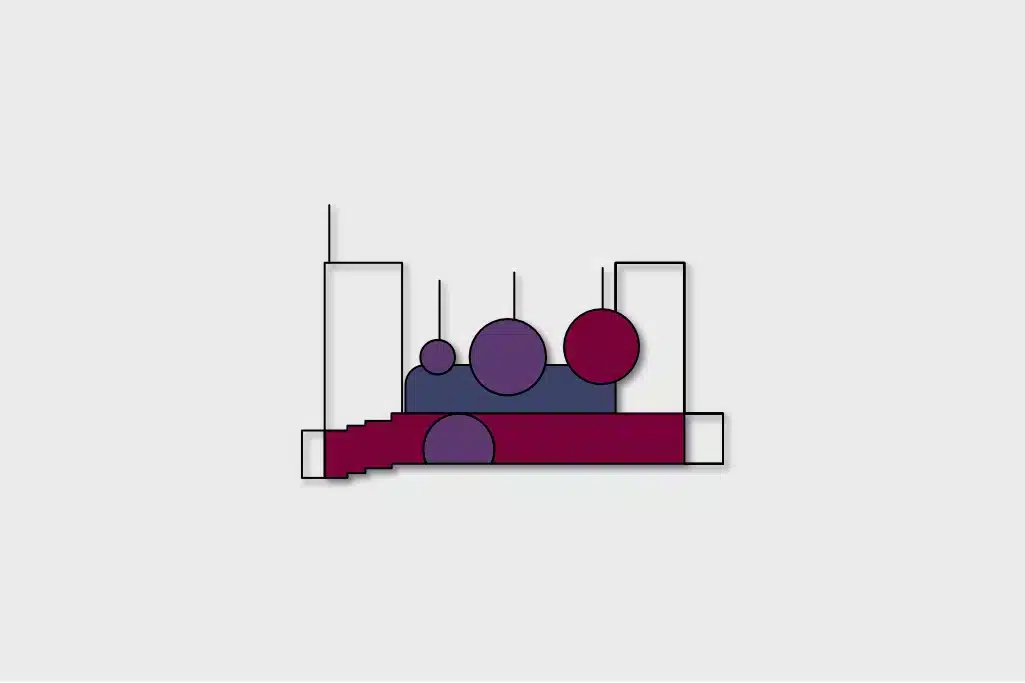Introduction
Management of change (MoC) is a systematic approach to addressing organisation, facility, and operational changes. Its purpose is to ensure that changes are implemented safely and seamlessly, whilst minimising the risk to people and the business.
In Process Safety Management (PSM), Management of Change (MoC) remains one of the most important pillars and the most challenging element to implement and control. Within the process industry, change is inevitable. Assets, compliance frameworks, personnel, leadership, and resources change during an industry’s life cycle.
The impacts of changes can be positive or negative, depending on the effectiveness of the change management process.
Why Management of Change
Forward-thinking businesses implement systems to prevent mistakes and understand the risks of making changes. They analyse errors and learn from them.
Managing change procedures has become common practice in quality management systems to avoid delivering low-quality services to customers. This same approach can be adapted to safeguard organisations from process safety risks that impact reputation, finances, assets, environmental responsibilities, and people’s well-being.
When effective Management of Change (MoC) is correctly implemented, it not only reduces the risk of change but significantly enhances the likelihood of successful changes. Achieving this involves clear communication for smoother transitions, transparency, and open conversations to gain stakeholder’s buy-in.
In addition, maintaining thorough documentation of changes and decisions ensures traceability and facilitates efficient root-cause analysis during troubleshooting activities. Effectively managing change is vital for successful outcomes, ensuring employee engagement, customer satisfaction, and overall organizational profitability.
Management of Change – Process Safety Disasters
Inadequate MoC practices have played a pivotal role in numerous catastrophic incidents, for instance:
- In Flixborough, UK (1974), a temporary change to install pipework to bypass an out-of-service vessel resulted in a rupture, releasing toxic and flammable cyclohexane. Tragically, this incident claimed the lives of 28 people. The risk of pressure within the temporary pipework was not identified, and pressure testing was not conducted to verify if the pipework was fit for purpose. This disaster was entirely avoidable.
- In the 1980s, the Piper Alpha offshore oil rig in the UK underwent extensive major modifications for gas exportation. Eight years after these changes, an explosion occurred at the gas installation, which was not adequately positioned at a safe distance from the control room. Consequently, communication and control systems critical for managing emergencies were compromised. Horrifically, the incident resulted in the loss of 167 lives.
- More recently, the Grenfell Tower disaster in the UK (2017) highlighted the danger of minor changes to building structures. These alterations escalated fire risk and tragically resulted in the loss of 72 lives. This catastrophe could have been prevented by carefully considering fire safety risks, when approving the aesthetic changes to the building.
A DSEAR Example of Risk Assessment in Management of Change (MoC)
Consider a process plant that decides to change its cleaning material. This decision could stem from supply-chain challenges or a cost-saving initiative. On the surface, it appears straightforward—a mere alteration in cleaning agents. However, if the right questions are not asked to the right people, crucial aspects may be overlooked during this change. Failure to address these details could result in unpleasant surprises, jeopardising project delivery or even leading to a disaster.
Once the change has been requested, as part of the MoC process, the change is screened. An appropriate screening question would be to check whether the new cleaning material is flammable. If the cleaning material is found to be flammable, hence determined a dangerous substance, then Dangerous Substances Explosive Atmosphere UK Regulations (DSEAR) apply.
DSEAR Regulation 5 states “No new work activity involving a dangerous substance shall commence unless an assessment has been made and the measures required by these Regulations have been implemented”.
The next step involves engaging a DSEAR assessor who determines the hazardous area classification based on the original design and provides recommendations, including but not limited to:
- Zoning reduction methods
- Required safe distances
- Required equipment protection level
The project is then implemented along with recommendations. Subsequently, a DSEAR verification confirms that the changes align with the assessment and that fire and explosion risks are appropriately managed.
At Sigma-HSE we have experience providing DSEAR assessments to clients after they have made changes. Sometimes, we find equipment not correctly selected or needing further work to make the process safe.
Making changes post-design phases especially after the commissioning phases is more challenging and expensive than addressing during the design phases.
The Stealth of Small Changes
Often, seemingly minor alterations slip under the radar of formal MoC processes. These adjustments accumulate over time, subtly transforming the plant. The original DSEAR report, once reflective of the site’s safety status, may no longer accurately represent the current risk.
The site may be blind to new DSEAR concerns. To address these small changes, scheduling periodic DSEAR assessments to maintain safety vigilance is essential. Low-risk processes should seek re-evaluation every 5 years, while high-risk processes are recommended assessments every 2 years.
These assessments ensure that site changes haven’t inadvertently escalated the risk of fire or explosions. Documentation and checklists are crucial for future reference, organizing information, and facilitating monitoring.
Conducting a thorough risk assessment is necessary to evaluate workplace risks associated with these small changes. Detailed documentation of the findings and implementing control measures based on the assessment help minimise potential hazards.
Another overlooked small change can be key personnel turnover within the organisation. To proactively prevent loss of knowledge, a consultation with consultants who are familiar with the site’s process safety journey can be invaluable in sharing knowledge.
Common Pitfalls of MoC
Leadership
Changes typically have good intentions, but sometimes they are bypassed and abandoned, resulting in wasted time and resources. Organisations typically do not struggle to write the policy and procedure to implement a Management of Change (MoC) system. The challenging aspect is the necessary discipline and commitment. If MoC is valued, resourced, and driven from the top-down by leadership, these challenges become easier to manage.
Consultation
Streamlining changes by avoiding consultation and making assumptions can lead to quick changes but may introduce serious safety gaps that will need to be addressed later. This can be avoided by identifying individuals who are responsible, accountable, and should be consulted, and informed during change projects, from the scoping to the closing stages. Feedback is essential for successful changes.
System design
Often, MoC systems are designed to be too complicated to follow for every change request. A well-designed system recognises that not all changes carry the same risks. High-risk changes should go through comprehensive process hazard analysis stages, pre-start-up safety reviews, and monitoring stages, whereas low-risk changes can go through fewer stage gates.
Effective systems are audited to monitor the performance of the MoC process, appropriately evaluating risks, resource impact, and success, with lessons shared for continuous improvement. Additionally, transformational change plays a significant role in redefining critical aspects of a business, such as company culture, internal processes, and corporate hierarchy, emphasizing the importance of change management to guide teams through these transitions effectively.
Project Delivery
Project management plays a crucial role in achieving successful project outcomes, especially when it comes to identifying and mitigating risks during change initiatives.
It is common to identify risks expected from the change, but less common to proactively assess risks during the change. For example, what if there is a change of project leader? How can this impact project delivery? What if key actions identified during the planning stage are not completed? By understanding these risks, an organisation is more likely to implement measures to protect project delivery.
Resources
Underestimating the resources needed to complete a change can be problematic. A change may be approved, planned, and budgeted for, with delivery beginning, but as it nears completion, another change project may be discussed, causing resources to shift to the new, exciting change while the previous change remains incomplete. MoC actions such as training staff, updating drawings, and procedures are left unfinished, which can cause issues later on for those who inherit the systems.
Organizational change
A well-executed change initiative is significant for businesses to achieve their organisational goals. By conducting reviews post-implementation to assess success or failure, MoC initiatives embedded within company culture helps promote continuous improvement and prevent regression to old practices. Leaders throughout an organisation must develop the desired skills to effectively manage these change initiatives, ensuring they are equipped to guide their teams through transitions both small and large.
Conclusion
In summary, prioritising robust MoC practices is essential for safeguarding lives, preventing disasters, and maintaining operational excellence in hazardous industries. By proactively addressing change, we fortify our defences against unwanted consequences.
Our Expertise:
At Sigma-HSE, we specialise in Process Safety. Our comprehensive services include:
- Training on Process Safety Awareness and DSEAR
- Reviewing and providing guidance on Process Safety Management (PSM) systems development including Management of Change (MoC).
- Facilitating HAZOP (Hazard and Operability Study) and HAZID (Hazard Identification) for new process hazard analysis or revalidation.
- Risk assessing DSEAR:
- We conduct desktop studies during detailed design stages. This proactive approach often results in significant cost savings by preventing the need for post-implementation adjustments.
- DSEAR Verification where we verify compliance during the commissioning stages.
- Periodic Full-Site Assessments



